Bites that itch when you wake up in the morning, little spots on your mattress, a feeling of being watched at night? You may have bed bugs in your home.
Don’t panic, here’s a complete treatment protocol, tested and validated in the field, to get rid of bed bugs for good.
The program includes a 6-step plan of attack to eliminate bed bugs from your bedroom, bedding and every corner of your home.
N.B.: This information is provided by Serenid, which offers a range of effective, long-lasting products to help both private individuals and professionals.
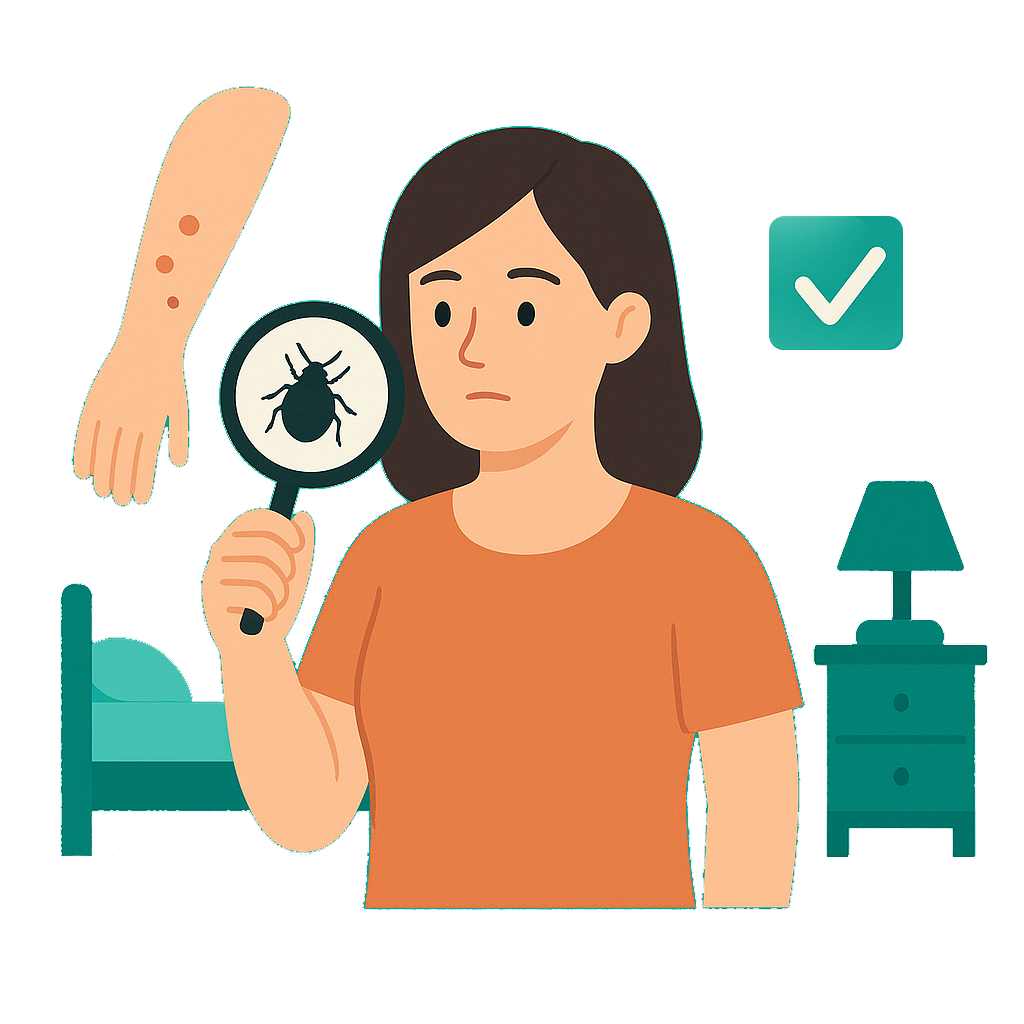
Step 1
Making the right diagnosis
Before starting treatment, you need to be sure that you’re dealing with a bedbug infestation. A proper diagnosis will help you avoid mistakes, identify the right treatment and, above all, react quickly.
- Recognize the signs of infestation (bites, marks, visible insects)
- Do not confuse with other pests or allergies
- Have the presence of a pest confirmed by a professional if necessary.
Spot the early warning signs
Bed bugs may be discreet, but they leave their mark. The first sign? Red bites, aligned or grouped, often located on the arms, legs or back, and on uncovered areas of your body. To get rid of bed bugs effectively, it’s crucial to know their favorite hiding places.
You can also spot :
- Small black spots (droppings) on mattress, sheets or box spring
- Blood stains on sheets when you wake up in the morning
- White eggs stuck in mattress seams or furniture nooks and crannies
Or even the insects themselves: bedbugs are small, brown, flat and visible to the naked eye, especially around the bed.
Validate diagnosis if doubt persists
Not quite sure? It’s best to call in a professional. Canine detection, for example, can locate bedbugs with over 95% reliability. Choose professionals with “VALIDATED BED BUG DETECTION EXPERTISE” certification, such as ECOFLAIR, a pioneer in this type of service. You can also contact our team at support@sereni-d.com, sending a photo of your bites, or of the insect captured with a piece of adhesive tape to prevent damage.
When in doubt, don’t wait: the more the infestation progresses, the more complex and costly the treatment becomes. A quick response can save you weeks of itching… and stress.
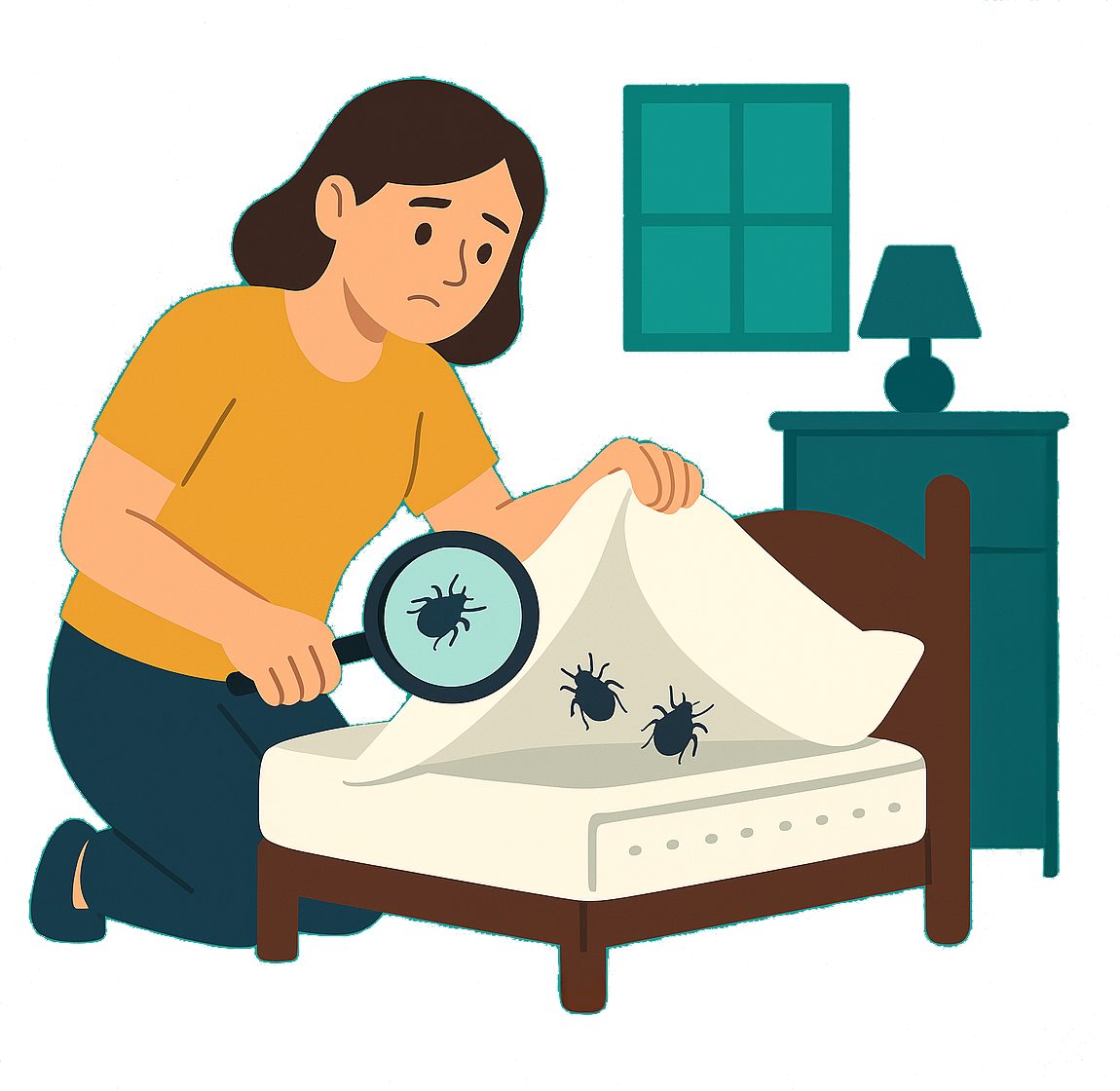
Step 2
Detection, localization, and estimation of infestation
Once the diagnosis has been confirmed, it is essential to locate the infestation sites and estimate their extent. This allows the treatment to be tailored and prevents recurrence.
- Inspect all rooms, not just the bedroom
- Know where to look: seams, bed frames, cracks, furniture, etc.
- Classify the infestation on a severity scale (from 1 to 6)
Where to look for bed bugs in your home
Contrary to popular belief, bed bugs do not only hide in mattresses. These insects avoid light and love dark, narrow areas close to their host.
Remember to inspect:
- Mattress seams and box springs
- Headboards, baseboards, cracks in walls, gaps in furniture
- Electrical outlets, picture frames, curtains, sofas, travel bags, clothing
⚠️ Don’t overlook any rooms: if the infestation is old, they can spread throughout the house.
Assess the extent of the infestation
An effective protocol begins with a clear assessment of the level of infestation.
There are six levels of severity:
- Level 1: bedbugs only in the bed
- Level 2: bedbugs in the bed and its immediate surroundings
- Level 3: scattered throughout the room
- Level 4: neighboring rooms also infested
- Level 5: widespread infestation of the dwelling
- Level 6: spread to the building (building, common areas, etc.)
The higher the level, the more comprehensive, combined, and repeated the treatment will need to be.
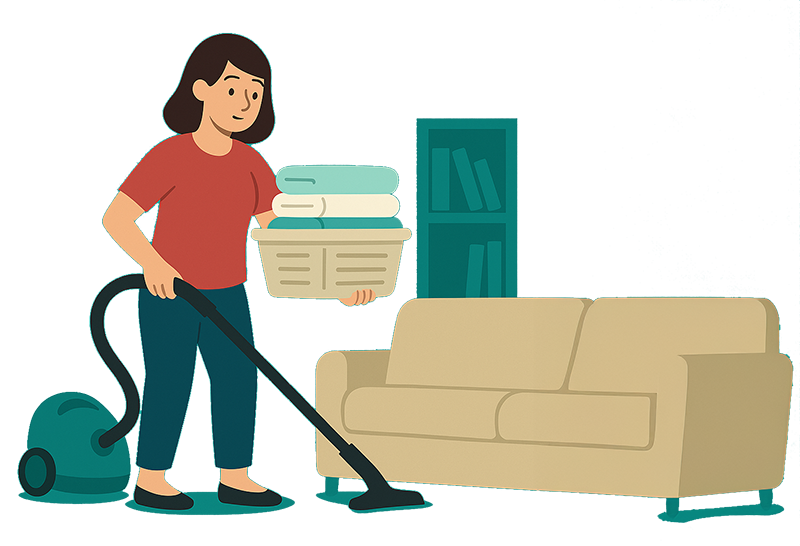
Step 3
Prepare your home before treatment
Before treating, you need to prepare. Good preparation is half the battle. It allows you to eliminate some of the bed bugs and ensures that the products you use afterwards will be effective.
- Clear, vacuum, and isolate the areas to be treated
- Wash and treat all linens and fabrics
- Facilitate access to all infested areas
Deep cleaning: what to do
Start by decluttering the rooms: the more stuff there is on the floor or under the beds, the more hiding places bed bugs will have.
Next:
- Vacuum thoroughly (mattresses, box springs, baseboards, cracks, furniture). Immediately throw the vacuum bag into a sealed bag outside.
- Place sheets, comforters, clothing, curtains, and linens in sealed bags.
- Wash everything at a minimum temperature of 60°C for 30 minutes, even unworn clothing.
- Items that cannot be washed should be put in a hot dryer or placed in the freezer at -20°C for 72 hours.
- Avoid cardboard boxes and cloth bags, which can harbor eggs. Use closed plastic containers instead.
Prepare furniture and bedding
Treatment is often concentrated in the bedroom. To maximize effectiveness:
- Move the bed away from the wall. Remove the bed legs if possible.
- Lift the mattresses, dismantle the bed frames, and open the drawers to expose the areas to be treated.
- Identify hiding places: bed bugs and eggs can get into seams, screws, slats, and cracks in wood. Good preparation is essential for getting rid of bed bugs in these hard-to-reach areas.
- Do not seal hiding places before treatment: the products or heat must first be able to reach the insects.
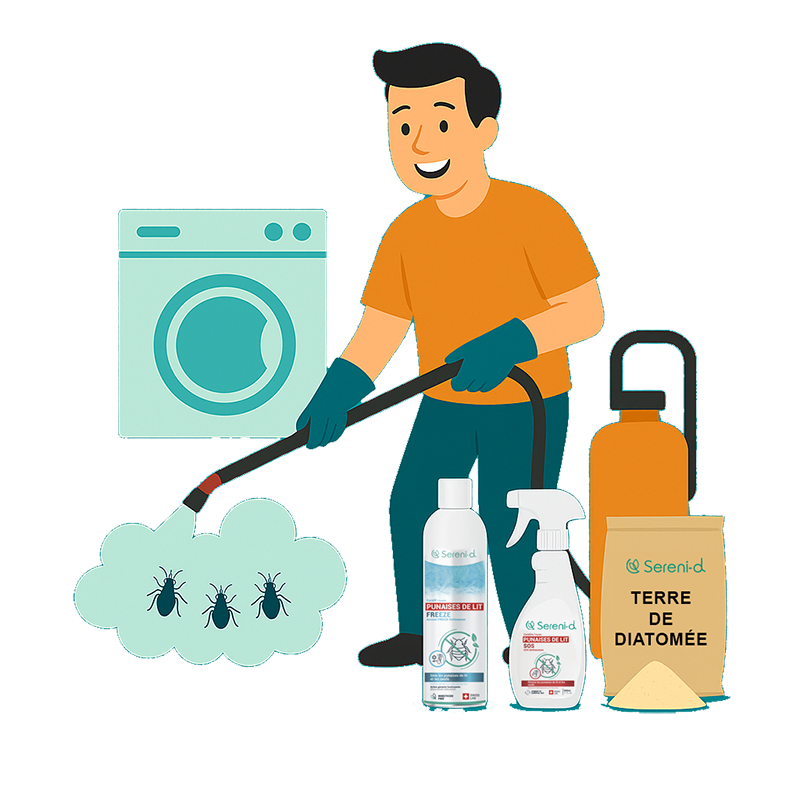
Step 4
Heat and chemical treatment
This is the key step in effectively getting rid of bed bugs. The goal is to reach all stages of development, from eggs to adults, using a combination of complementary methods.
- Use heat to kill eggs, nymphs, and adults
- Treat with professional anti-bed bug products
- Repeat the treatment to ensure complete elimination
Heat treatment: fast and effective
Heat is the most effective weapon against bed bugs, provided it is applied correctly.
- Dry steam cleaner (minimum 120°C): apply to surfaces from a distance of 5 cm for several seconds. This kills insects and eggs immediately.
- Ideal for mattresses, box springs, baseboards, curtains, sofas, carpets, suitcases, bags, etc.
- For sensitive items (books, shoes, delicate fabrics), freeze at -20°C for 72 hours or use targeted steam.
⚠️ Warning: steam applied at a distance of 15 cm or incorrectly applied will be completely ineffective. Effectiveness depends on the temperature, duration of contact, and precision of application.
Insecticide treatments: an essential complement
Combined with heat treatment, a “chemical” treatment is essential to reach the most hidden bed bugs. Sereni-d offers a range of professional anti-bed bug products for private individuals. The Sereni-d range has been developed by selecting active substances of plant origin and essential oils to enhance their effectiveness.
For total and effective elimination of bed bugs, you can combine our following solutions:
- SHOCK treatment: Spray SOS Bedbugs XXL spray on bed frames, furniture, and baseboards. Thanks to its plant-based pyrethrum flower extract combined with a complex of essential oils selected for their insecticidal properties, SOS ensures the rapid destruction of bed bugs at all stages of development (larvae, adults) by shocking their nervous systems and exoskeletons, neutralizing and drying them out.
- BASIC treatment: Spray diatomaceous earth in strategic locations (behind the headboard, behind baseboards, corners of walls, ceiling). Diatomaceous earth is a natural solution that causes insects to dry out and die within a few hours. It is effective for at least three weeks and does not induce resistance. It is an excellent deep treatment for reaching the most hidden bed bugs.
- CRYO treatment: Spray Cryo Freeze aerosol on the most sensitive surfaces such as mattresses, sofas, or children’s beds. It is a 100% natural bed bug elimination solution, thanks to a gel that reaches -40°C.
Repeat these two heat and chemical treatments three times at intervals of seven to ten days.
Good to know: only a combined heat and chemical treatment will kill 100% of the insects. A single treatment, even if done properly, is not enough to eradicate an infestation. It is necessary to repeat these treatments at least twice, 10 days apart, and we even recommend three treatments.
Call in a professional
In the event of a serious infestation and if you feel overwhelmed by events, you can call in a certified professional.
Here are a few tips to help you choose the right one:
- Check that they are Certibiocide certified, which is mandatory for handling professional chemicals.
- Choose a service provider who offers a comprehensive preliminary assessment, a written protocol, and at least two visits spaced 7 to 10 days apart.
- A good professional will explain how to prepare your home, provide you with a clear quote, and give you a detailed report of the work carried out.
⚠️ Warning: scams are common. Ask for several quotes and be wary of prices that are too good to be true or promises of a “one-time” treatment.
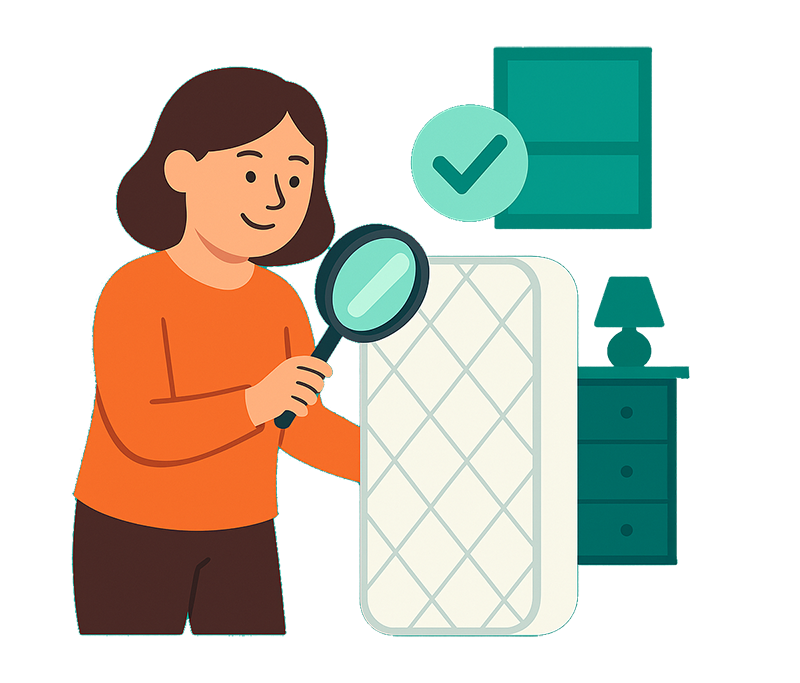
Step 5
Verification of the effectiveness of the treatment performed
After treatment, it is essential to ensure that all bed bugs – including eggs – have been eliminated.
- No bites for 3 to 4 weeks: a good sign.
- Regularly inspect areas at risk (bedroom, mattress, furniture, etc.).
- If in doubt: have a professional check again or use a bed bug detection dog.
Watch for signs for several weeks
The golden rule? No bites for 3 to 4 weeks. This is a sign that the treatment has been effective. During this period, pay close attention to any suspicious signs:
- New red bumps or itching when you wake up,
- Presence of small black spots (feces),
- Small clear skins (exuviae) or visible insects.
To optimize monitoring, you can use detector traps, placed under the legs of the bed or around the bed frame. These will capture any surviving bed bugs.
Using dogs for detection: a method that is 95% reliable
If you want absolute certainty, call in a certified dog detection company. Thanks to their sense of smell, detection dogs are able to identify bed bugs (live or dead) with over 95% reliability, even in the early stages of infestation.
This method is particularly recommended:
- after treatment to confirm its effectiveness,
- before moving into a new home,
- or if you suspect an infestation but there are no visible signs.
👉 Good to know: some bed bug insurance policies or landlords require this type of check to certify that a property is “infestation-free.”
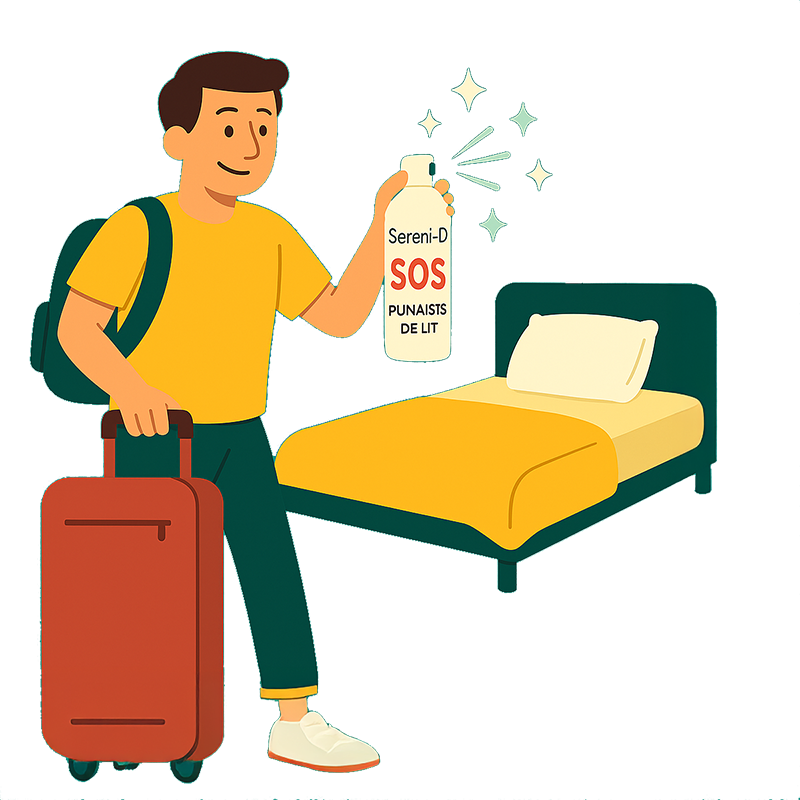
Step 6
Prevention of recidivism
Getting rid of bed bugs is good. Not seeing them again is better. Once your home has been treated, adopt the right habits to prevent reinfestation. 40% of infestations come from travel!
- Take preventive measures every day
- Follow best practices when traveling (travel, transportation, etc.)
Preventive measures for everyday life
Even in your own home, it is possible to limit the risk of bed bugs:
- Install bed bug covers on your mattresses and box springs. They block access to the bedding and trap any bed bugs inside.
- Vacuum regularly around the corners of beds, baseboards, and furniture. This preventive cleaning plays an important role in getting rid of bed bugs before they proliferate.
- Avoid bringing home untreated secondhand items (mattresses, sofas, frames, etc.).
- Inspect your textiles after every trip away from home, even if it’s just for one night.
When traveling or on the move: what to do
Bed bugs often travel… with you. They invite themselves into your suitcases, clothes, or backpacks, especially after a stay in a hotel, bed and breakfast, or rental accommodation.
Here are some steps to take:
- Inspect your bedding when you arrive: mattress seams, headboards, sheets, box springs.
- Keep your suitcases closed and, if possible, on a surface away from the floor or suspended.
- Use a bed bug repellent: our SHIELD or travel pack are designed to protect your belongings when traveling.
- When you get home: put your bag on the floor tiles or in the bathtub, wash all your clothes at 60°C, and put the rest in the freezer (–20°C for at least 72 hours).
For more information: How to avoid bed bugs when traveling?
Useful resources
➡️ Adil network : 0806 706 806
INELP – Institut National d’Études et de Lutte contre la Punaise de lit
➡️ Professional resources, training, and detailed PDFs to understand the life cycle and best eradication methods.
inelp.fr
CS3D – Chambre Syndicale 3D (Dératisation, Désinsectisation, Désinfection)
➡️ Directory of certified companies, quality labels, advice on choosing a trusted service provider.
cs3d.fr
SEDCPL – Syndicat des Experts en Détection Canine des Punaises de Lit
➡️ List of certified dog handlers, information on canine detection and recognized certifications. sedcpl.fr
